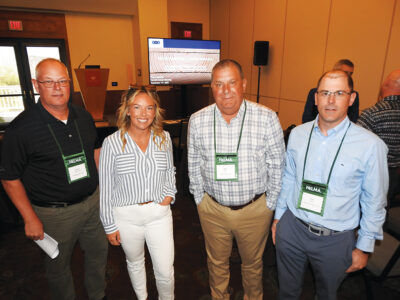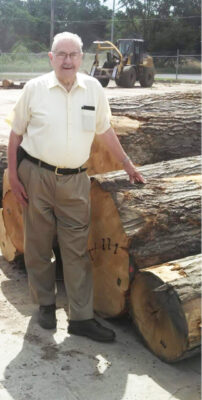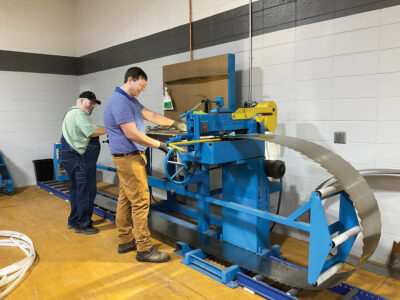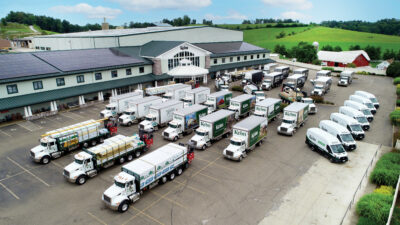
As we approach the end of what can be described as a very sluggish year for most wood products manufacturers, many West Coast producers, and North America as a whole, continue to navigate obstacles ahead. At the time of this writing two massive hurricanes had battered the inland east as well as the seaboard. It will require years if not decades to rebuild, and at what cost? New U.S. duties have been levied on Canadian fiber entering the states, prices remain flat, and while it appears that building activity is semi-robust it is not translating to a healthy marketplace.
The following is what a handful of West Coast producers had to say:
Dean Garofano of Delta Forestry Group, Pitt Meadows, BC, said, “As I reflect on 2024, I recognize that it has been another challenging year for our coastal forest industry. Fortunately, Delta Forestry Group has seen a steady take away from our customers this year, despite the overall lack of demand evident in the marketplace. Our company sales measured in fbm are up more than 12 percent year to date from 2023. Some 4-inch items have been challenging to move at times while other items, like 5/4×6 decking have stayed in high demand and have been difficult to keep up with. Meanwhile, we have recently seen both interior and coastal sawmills permanently or indefinitely shut down in British Columbia, while additional sawmills have significantly reduced their production. Unfortunately, the post covid overall lumber demand has stayed stubbornly low.” Garofano continued, “The coastal log harvest to the end of July was once again down from the previous year by 5 percent. With our late fire season this year the numbers will likely be down more than 5 percent by year’s end. October is typically a month where loggers are in full swing, and mills can start to build inventory. This year however, the log sort yards in Howe Sound are mostly shut down due to the lack of logs. So currently in the industry, we continue to repeat the cycle of producers fighting for logs, keeping the prices high and then having to sharpen lumber prices to compete with others to win orders and move the finished products. This, combined with the increased duty rates, have made the economics very challenging for primaries. With the current issues plaguing the BC forest industry, it is unlikely that log supply can increase much before the end of next year.” Garofano finished with this sentiment, “Should lumber demand pick up in 2025 things could get very interesting. The Delta Forestry Group hopes to see you at the NAWLA Traders market in Phoenix. Stop by our booth 518.”
Brett Slaughter of Elk Creek Forest Products, McMinnville, OR, had this to say, “Commodity lumber in general remains over supplied in DF markets, often keeping prices below many mill conversion costs. As we have seen this year, many vendors in the west have curtailed or had closures due to imbalance of log price and availability as it relates to lumber prices. We have seen a bit of upward price movement in the 3rd Q but only slight and yet unstable entering the 4th Q. Some specialty items along with specific products from mills that are now gone have kept ECFP busy and nimble to fill vacancies in this market.” Slaughter continued, “Many customers of ours have made investments into the future, looking for more market share of specialty items we produce. Our continued investment of people and equipment along with a recent acquisition will allow us to keep pace with demands going forward. Mood going into 2025 and particularly 2nd Q and beyond seems favorable by many. Large log diameters have been more challenged in 2024 than any year I have seen in the past. Uppers and specialty products from these limited sources have run up prices and lead times if available at all. As mentioned above primary manufacturing has taken the hardest hit in 2024 with several factors all working against them. Besides log price and availability labor and all costs of doing business have continued to increase with our inflationary pressures. Retirement of certain skilled positions are often not able to be replaced quickly enough by automation or sometimes equaled by any technology. For us it is bittersweet because we have never wanted to lose any primary manufacturing however the lack of certain items available because of the changes has ECFP rating the year performance a 7 out of 10.” Slaughter finished with this, “This industry has shown incredible resilience throughout decades and usually leads economic cycles in and out of change. Those companies able and choosing to invest during and after all the 2024 consolidation and curtailments/attrition will be poised for growth in a new cycle ahead.”
Aidan Coyles of Gilbert Smith Forest Products, Barriere, BC, said, “Demand is limited but supply is tight (especially in 6-inch products). Price in 4-inch and 8-inch appears to have stagnated. Customers are happy to pick away at business into the fall. No real certainty yet on next year’s outlook. Not much for booking out large volumes but people still committing to some volume into winter. Log supply is still a challenge, lots of curtailments means less logging happening into winter. We could see a tight Q4-Q1 log supply. Wet weather in BC is making log hauling difficult. Some sites shut down hauling until frost hardens up the road. As far as how I would rate the year on the whole, I am going with an optimistic 6 out of 10, better than expected.”
John McDowell of Oregon Industrial Forest Products, Springfield, OR, said, “Supply remains tight in DF clears. Especially in material 6-inch and wider. Wait times of 4-8 months for material on orders are a reality. However, while mills continue to want to raise their prices, due to the lack of material available both domestically and in Canada, our customers are pushing back on pricing. DF clears have essentially gotten to prices where people just choose another product to use when you finally get the wood you have been waiting on for so long. You would expect to turn around and sell it all immediately, but the pricing is so high that it may slowly trickle out instead creating strange markets where often people can’t find the material they want (or the timing) but then when they do, they are not excited about the cost. It appears that the demand is there for this material, but overall people are reluctant to then hand over what money they currently have.” McDowell continued, “Yellow Cedar has been more readily available but with various mill issues this second half of 2024 much of the 3rd quarter material is arriving behind schedule. This will mean we will have to see how much product is able to move during the election to see what will be needed during the 4th quarter leading into next year.
“For OILP this year has been very up and down depending on material and local markets. I would rate this year as 6-7 out of 10 with the ability to move up or down a point depending on how the upcoming election and post-election affects the market. We expect a good 2025 regardless of the election outcome but weather and politics will have their usual part to play in how quickly people begin wanting to pick up material in the spring.”









